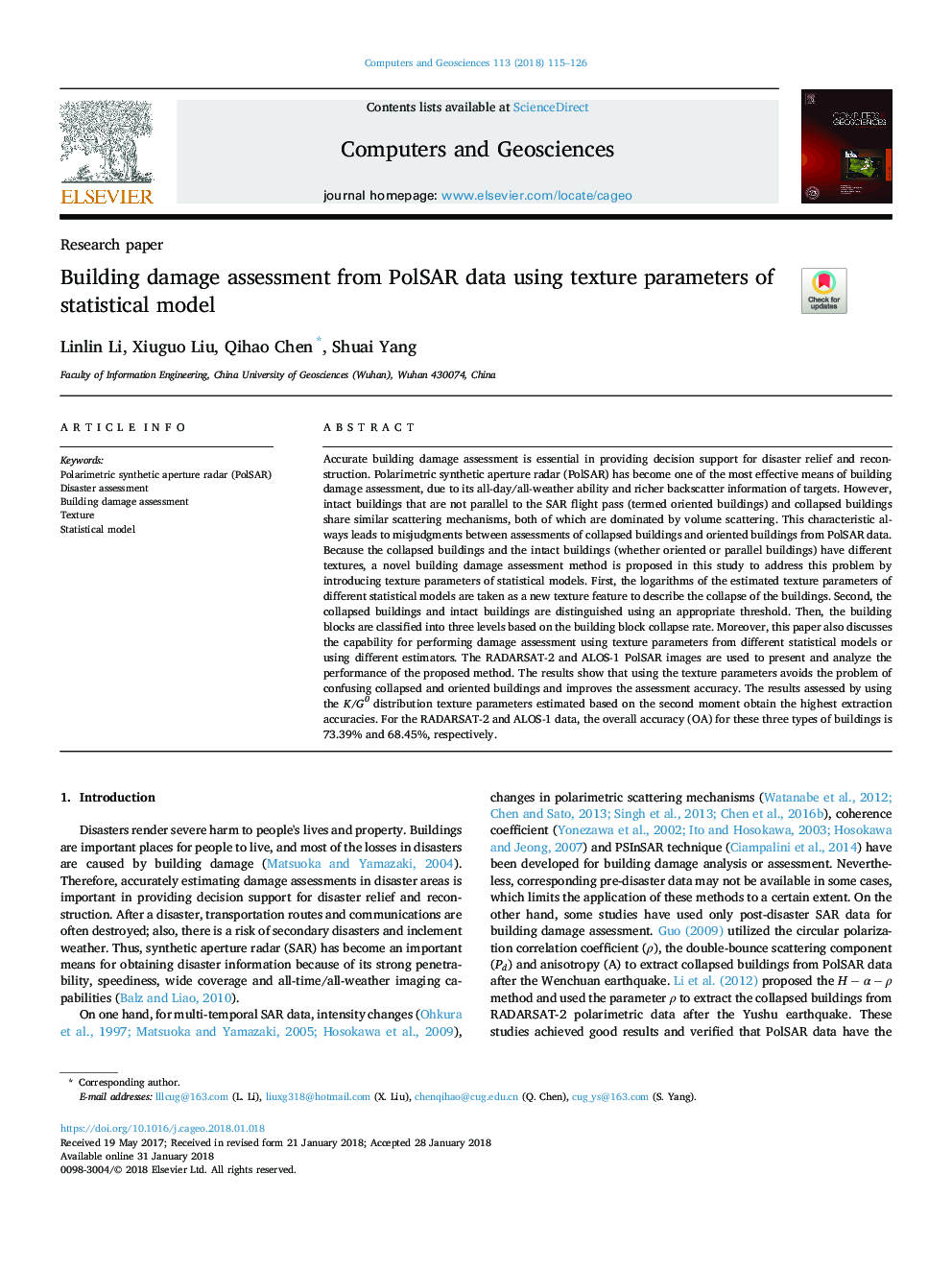| کد مقاله | کد نشریه | سال انتشار | مقاله انگلیسی | نسخه تمام متن |
|---|---|---|---|---|
| 6922185 | 1448271 | 2018 | 12 صفحه PDF | دانلود رایگان |
عنوان انگلیسی مقاله ISI
Building damage assessment from PolSAR data using texture parameters of statistical model
دانلود مقاله + سفارش ترجمه
دانلود مقاله ISI انگلیسی
رایگان برای ایرانیان
کلمات کلیدی
موضوعات مرتبط
مهندسی و علوم پایه
مهندسی کامپیوتر
نرم افزارهای علوم کامپیوتر
پیش نمایش صفحه اول مقاله

چکیده انگلیسی
Accurate building damage assessment is essential in providing decision support for disaster relief and reconstruction. Polarimetric synthetic aperture radar (PolSAR) has become one of the most effective means of building damage assessment, due to its all-day/all-weather ability and richer backscatter information of targets. However, intact buildings that are not parallel to the SAR flight pass (termed oriented buildings) and collapsed buildings share similar scattering mechanisms, both of which are dominated by volume scattering. This characteristic always leads to misjudgments between assessments of collapsed buildings and oriented buildings from PolSAR data. Because the collapsed buildings and the intact buildings (whether oriented or parallel buildings) have different textures, a novel building damage assessment method is proposed in this study to address this problem by introducing texture parameters of statistical models. First, the logarithms of the estimated texture parameters of different statistical models are taken as a new texture feature to describe the collapse of the buildings. Second, the collapsed buildings and intact buildings are distinguished using an appropriate threshold. Then, the building blocks are classified into three levels based on the building block collapse rate. Moreover, this paper also discusses the capability for performing damage assessment using texture parameters from different statistical models or using different estimators. The RADARSAT-2 and ALOS-1 PolSAR images are used to present and analyze the performance of the proposed method. The results show that using the texture parameters avoids the problem of confusing collapsed and oriented buildings and improves the assessment accuracy. The results assessed by using the K/G0 distribution texture parameters estimated based on the second moment obtain the highest extraction accuracies. For the RADARSAT-2 and ALOS-1 data, the overall accuracy (OA) for these three types of buildings is 73.39% and 68.45%, respectively.
ناشر
Database: Elsevier - ScienceDirect (ساینس دایرکت)
Journal: Computers & Geosciences - Volume 113, April 2018, Pages 115-126
Journal: Computers & Geosciences - Volume 113, April 2018, Pages 115-126
نویسندگان
Linlin Li, Xiuguo Liu, Qihao Chen, Shuai Yang,